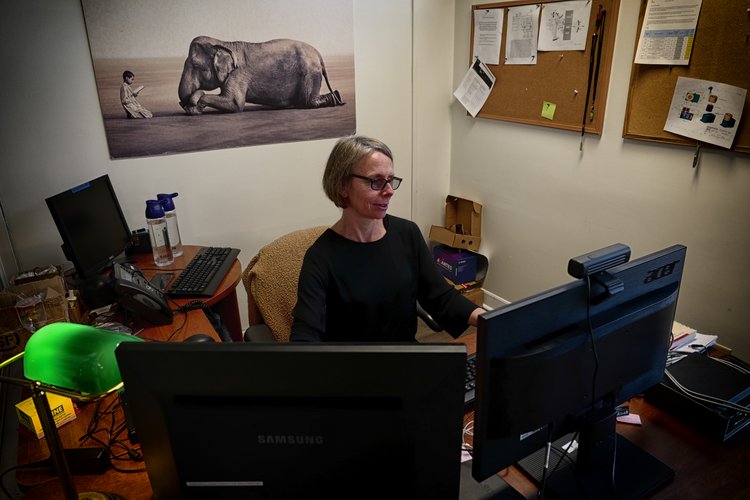Some Known Incorrect Statements About Circularly Polarized Luminescence
Some Known Incorrect Statements About Circularly Polarized Luminescence
Blog Article
The Greatest Guide To Spectrophotometers
Table of ContentsThe smart Trick of Circularly Polarized Luminescence That Nobody is DiscussingAll about SpectrophotometersThe 25-Second Trick For Uv/visThe Uv/vis/nir StatementsNot known Details About Circular Dichroism

Although spectrophotometry is most typically used to ultraviolet, noticeable, and infrared radiation, modern spectrophotometers can question large swaths of the electromagnetic spectrum, including x-ray, ultraviolet, noticeable, infrared, and/or microwave wavelengths. Spectrophotometry is a tool that hinges on the quantitative analysis of particles depending on how much light is soaked up by colored compounds.
The Greatest Guide To Spectrophotometers
A spectrophotometer is typically used for the measurement of transmittance or reflectance of options, transparent or opaque solids, such as refined glass, or gases. Although lots of biochemicals are colored, as in, they absorb visible light and therefore can be measured by colorimetric treatments, even colorless biochemicals can typically be converted to colored compounds appropriate for chromogenic color-forming reactions to yield compounds suitable for colorimetric analysis.: 65 Nevertheless, they can also be designed to determine the diffusivity on any of the listed light ranges that usually cover around 2002500 nm utilizing different controls and calibrations.
An example of an experiment in which spectrophotometry is used is the decision of the stability constant of a solution. A specific chain reaction within an option might happen in a forward and reverse instructions, where reactants form products and products break down into reactants. At some point, this chemical reaction will reach a point of balance called a stability point.
The Main Principles Of Circular Dichroism
The amount of light that passes through the service is indicative of the concentration of particular chemicals that do not enable light to travel through. The absorption of light is due to the interaction of light with the electronic and vibrational modes of molecules. Each kind of particle has a specific set of energy levels related to the makeup of its chemical bonds and nuclei and therefore will soak up light of particular wavelengths, or energies, leading to special spectral properties.
They are commonly used in many markets consisting of semiconductors, laser and optical manufacturing, printing and forensic evaluation, as well as in laboratories for the study of chemical substances. Spectrophotometry is frequently utilized in measurements of enzyme activities, decisions of protein concentrations, determinations of enzymatic kinetic constants, and measurements of ligand binding reactions.: 65 Ultimately, a spectrophotometer is able to identify, depending on the control or calibration, what substances are present in a target and exactly how much through estimations of observed wavelengths.
This would come as a service to the previously developed spectrophotometers which were not able to soak up the ultraviolet properly.
The Only Guide for Uv/vis/nir
It would be discovered that this did not give acceptable results, therefore in Model B, there was a shift from a glass to a quartz prism which enabled better absorbance outcomes - spectrophotometers (https://pagespeed.web.dev/analysis/https-olisclarity-com/ft59obxjpp?form_factor=mobile). From there, Model C was born with a modification to the wavelength resolution which ended up having 3 units of it produced
It irradiates the sample with polychromatic light which the sample soaks up depending upon its properties. Then it is transmitted back by grating the photodiode selection which detects the wavelength area of the spectrum. Ever since, the production and application of spectrophotometry gadgets has actually increased profoundly and has turned into one of the most ingenious instruments of our time.

Uv/vis Can Be Fun For Anyone
Historically, link spectrophotometers utilize a monochromator including a diffraction grating to produce the analytical spectrum. The grating can either be movable or repaired. If a single detector, such as a photomultiplier tube or photodiode is utilized, the grating can be scanned step-by-step (scanning spectrophotometer) so that the detector can determine the light strength at each wavelength (which will correspond to each "action").
In such systems, the grating is fixed and the strength of each wavelength of light is determined by a various detector in the array. Furthermore, most modern-day mid-infrared spectrophotometers utilize a Fourier change strategy to get the spectral info - https://hubpages.com/@olisclarity1. This strategy is called Fourier transform infrared spectroscopy. When making transmission measurements, the spectrophotometer quantitatively compares the fraction of light that passes through a recommendation service and a test option, then digitally compares the intensities of the 2 signals and computes the portion of transmission of the sample compared to the recommendation requirement.

Report this page